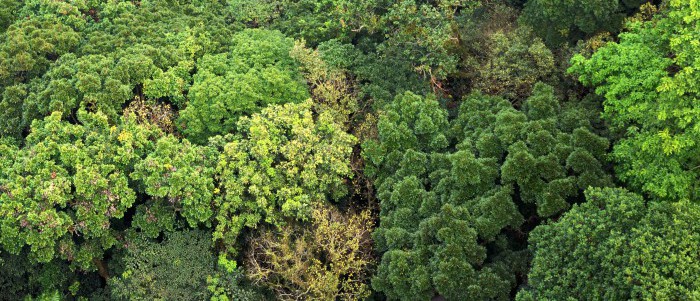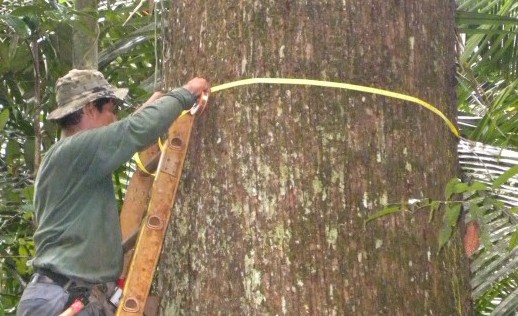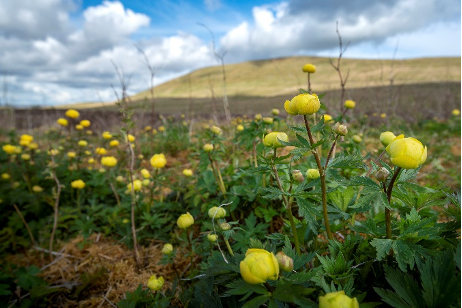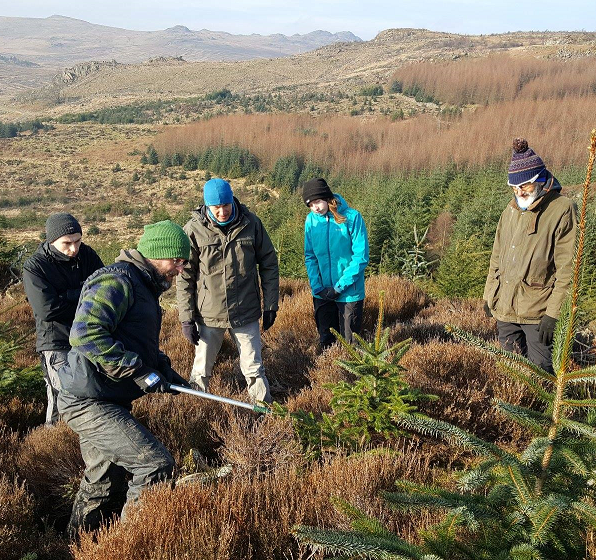Forest Monitoring

Researchers across the LEAF network are monitoring forests, including the stocks of carbon in the world's forests, changes to the mortality of trees, biodiversity in forests and land use change.
 The amount of carbon dioxide (CO2) in the atmosphere is partly regulated by how much is removed and released by the terrestrial biosphere. It’s estimated that the global terrestrial land sink (vegetation and soils) is currently removing a 3.4 GtC per year (based on data from 2010-2019).
The amount of carbon dioxide (CO2) in the atmosphere is partly regulated by how much is removed and released by the terrestrial biosphere. It’s estimated that the global terrestrial land sink (vegetation and soils) is currently removing a 3.4 GtC per year (based on data from 2010-2019).
The amazon rainforest makes substantial contributions to the global store of carbon in vegetation, estimated to store approximately 50% of all terrestrial carbon. This makes intact tropical forests crucial to the regulation of the climate, and protecting these forests is important for mitigating future climate change. Tropical forests also make significant contributions to global biodiversity and the provision of ecosystem services which support human life on earth.
Here at the University of Leeds, researchers contribute to ForestPlots.net, a group of over 2500 people monitoring forests in more than 50 countries. ForestPlots.net have established over 5000 forest monitoring plots across the world to better understand the effects of climate change on forests, and forest diversity. A recent study from ForestPlots.net researchers, based in the School of Geography, found the ability of forests in tropical regions to remove carbon from the atmosphere to be decreasing. The study tracked 300,000 trees over 30 years in Africa and the Amazon to monitor uptake of carbon. Whilst increased concentrations of CO2 can boost the productivity of forests, the CO2 fertilisation effect can only partially offset the negative impacts of temperature rise on tree growth and mortality. The models projected a long-term decline in African and Amazonian carbon sinks in the future, with the potential for the Amazonian sink to become a source of carbon in the 2030s.
Researchers in the School of Geography are also coordinating RAINFOR, an international network of researchers seeking to better understand the dynamics of amazon ecosystems, collecting biogeochemical and soil data across a wide range of forest plots.

Joseph Gray / WWF-UK
Closer to home, researchers from the School of Earth and Environment have been monitoring the impacts of natural regeneration on carbon sequestration. In Scotland, LEAF researchers, in partnership with NatureScot have been examining the potential carbon sequestration of native woodland expansion that could be delivered through natural regeneration. Using models to predict the types of native woodland that could be expected across uplands of mainland Scotland, the study estimated the carbon sequestration potential of those native woodlands and found naturally regenerated woodland to have the potential to take up 7 million tonnes of CO2 every year.

Similarly, as part of the Restoring Hardknott Forest project, researchers have begun monitoring the carbon uptake of naturally regenerated forests in the Duddon Valley, as well as biodiversity monitoring. The carbon uptake of naturally regenerated woodlands is not well understood. Researching natural regeneration can help us to better understand the potential for regeneration activities to store carbon.
Monitoring forests closely helps us to build a picture of how the world’s forests are changing and responding to climate change. This will help to inform climate modelling and influence policy and decision making.
Check out our news page for more research on this theme.
